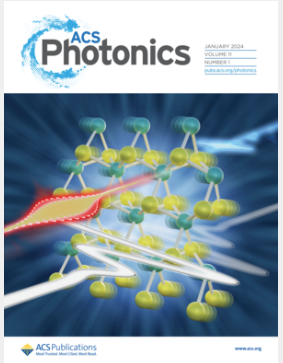利用偏振光研究压电晶体的自愈行为
IF 6.5
1区 物理与天体物理
Q1 MATERIALS SCIENCE, MULTIDISCIPLINARY
引用次数: 0
摘要
以原子精度量化晶体材料的自愈效率是一项挑战。具有自愈合能力的有机晶体因其广泛的潜在应用而备受关注。在本研究中,我们对自愈合晶体进行了全面的偏振穆勒矩阵分析。我们的研究结果不仅探究和量化了晶体的各种光学特性,还对其自愈合机制提出了新的见解。我们观察到,机械应力引起的晶体微观偏振特性的变化表现为各向异性参数的降低,例如,在未完全愈合和断裂的晶体中,各向异性参数的衰减和延迟。振幅和相位各向异性参数的降低被解释为光弹性效应的表现,即断裂晶体中的一些残余应变导致各向异性晶体的介电张量发生变化。这些变化反过来又通过永久偶极子的取向和应力引起的表面电荷的产生解释了宏观压电极化的变化,从而导致晶体的自主自愈。除了显著的自愈特性外,该晶体还表现出丰富的光学特性,如强烈的偏振各向异性效应、非线性特性等。本文章由计算机程序翻译,如有差异,请以英文原文为准。

Self-Healing Behavior of Piezoelectric Crystals Studied Using Polarized Light
It is challenging to quantify the self-healing efficiency in crystalline materials with atomic precision. Organic crystals with self-healing capabilities are of particular interest due to their wide-ranging potential applications. In this study, we present a comprehensive polarization Mueller matrix analysis of a self-healing crystal. Our results not only probe and quantify the crystal’s various optical properties but also offer new insights into its self-healing mechanism. We observe that the mechanical stress-induced changes of the microscopic polarization properties of the crystal are manifested as the reduction of anisotropic parameters, e.g., diattenuation and retardance, in the imperfectly healed and fractured crystal. This reduction in amplitude and phase anisotropy parameters is interpreted as the manifestation of the photoelastic effect, where some remnant strain within the broken crystal leads to the alteration of the dielectric tensor of the anisotropic crystal. These alterations, in turn, explain changes in the macroscopic piezoelectric polarization through the orientation of the permanent dipoles and the generation of stress-induced surface charges, which leads to the autonomous self-healing of the crystal. Beyond its remarkable self-healing properties, the crystal also exhibits rich optical properties, e.g., strong polarization anisotropy effects, nonlinear properties, etc.
求助全文
通过发布文献求助,成功后即可免费获取论文全文。
去求助
来源期刊

ACS Photonics
NANOSCIENCE & NANOTECHNOLOGY-MATERIALS SCIENCE, MULTIDISCIPLINARY
CiteScore
11.90
自引率
5.70%
发文量
438
审稿时长
2.3 months
期刊介绍:
Published as soon as accepted and summarized in monthly issues, ACS Photonics will publish Research Articles, Letters, Perspectives, and Reviews, to encompass the full scope of published research in this field.
 求助内容:
求助内容: 应助结果提醒方式:
应助结果提醒方式:


